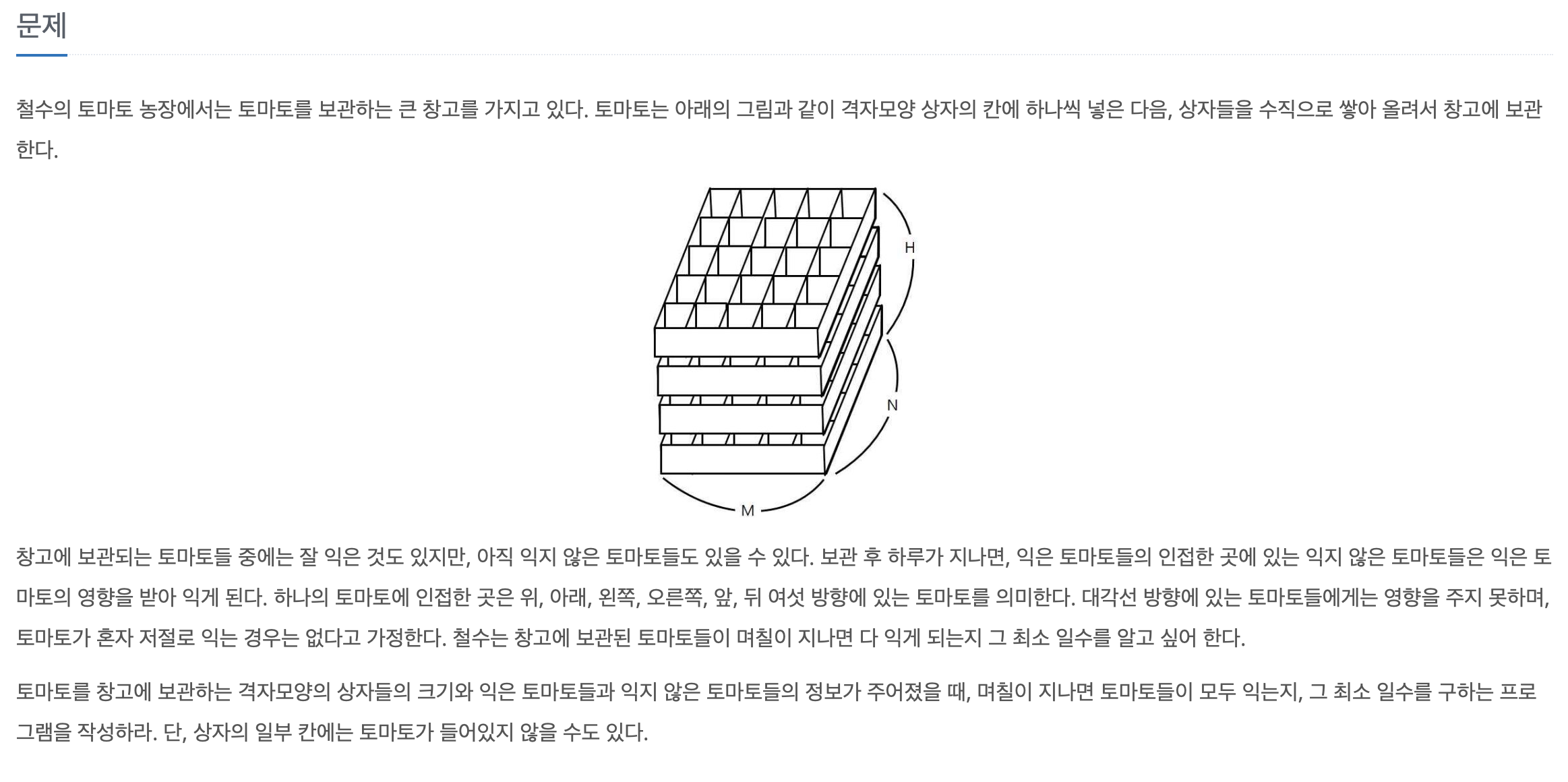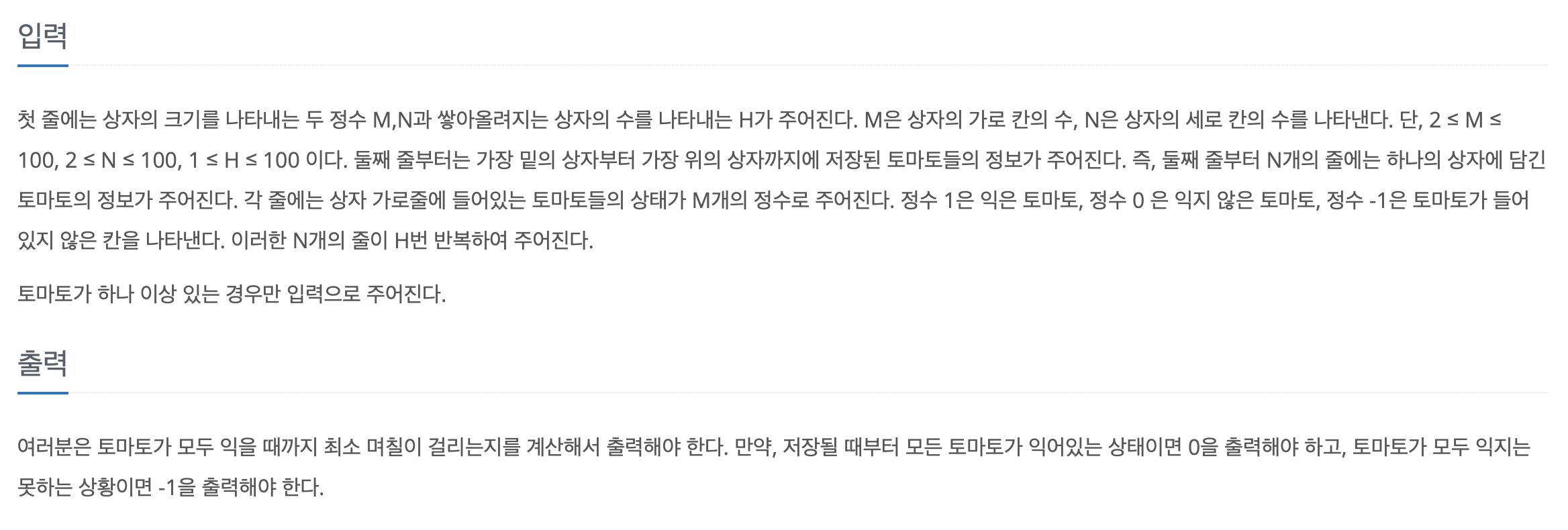문제


코드
#include <iostream>
#include <queue>
using namespace std;
int N,M,H;
int box[101][101][101];
bool visited[101][101][101];
int dir[6][3] = {{0,1,0},{0,-1,0},{1,0,0},{-1,0,0},{0,0,1},{0,0,-1}};
int main(void){
cin.tie(0);
ios_base::sync_with_stdio(false);
queue< vector<int> > q;
cin >> M >> N >> H;
for (int h = 0; h < H; h++){
for (int i = 0; i < N; i++){
for (int j = 0; j < M; j++){
cin >> box[i][j][h];
if (box[i][j][h] == 1) {
vector<int> temp(3, 0);
temp[0] = i; temp[1] = j; temp[2] = h;
q.push(temp);
visited[i][j][h] = true;
}
}
}
}
int cnt = 0;
while (!q.empty()){
int r = q.front()[0], c = q.front()[1], h = q.front()[2];
q.pop();
for (int i = 0; i < 6; i++){
int nr = r + dir[i][0], nc = c + dir[i][1], nh = h + dir[i][2];
if (nr < 0 or nr >= N or nc < 0 or nc >= M or nh < 0 or nh >= H) continue;
if (!visited[nr][nc][nh] and box[nr][nc][nh] == 0) {
visited[nr][nc][nh] = true;
box[nr][nc][nh] = box[r][c][h] + 1;
cnt = max(cnt, box[nr][nc][nh]);
vector<int> temp(3,0);
temp[0] = nr; temp[1] = nc; temp[2] = nh;
q.push(temp);
}
}
}
// check
for (int h = 0; h < H; h++){
for (int i = 0; i < N; i++){
for (int j = 0; j < M; j++){
if (box[i][j][h] == 0) {
cout << -1;
return 0;
}
}
}
}
cnt == 0 ? cout << "0" : cout << cnt-1;
return 0;
}접근
기존에 풀었던 토마토 문제에서 한 차원이 늘어난 형태이다. 따라서 인접한 4개의 위치만 살피던 이전 문제와 다르게 위, 아래도 살펴야하는 부분이 달라졌다. 이전 문제를 풀었다면 충분히 풀만한 문제였다고 생각한다.
